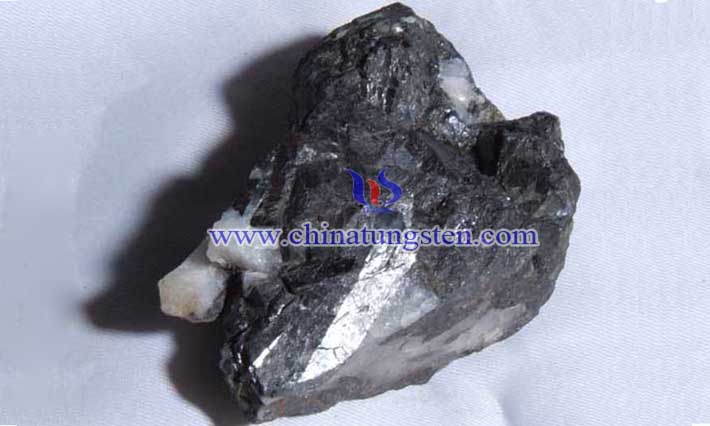You may know that Victoria is located on the southeast coast of Australia and is known as the “Garden State” and the “Australian Miniature”! However, you know that although the state is only three percent of Australia's land area, its GDP is more than a quarter of Australia's. It has to be said that part of the credit is its rich natural mineral resources, which provides a good foundation for the development of the Australian economy. Therefore, Australia can be said to be the country with the largest tungsten and molybdenum resources.

australia picture
Recently, the Victorian Government issued the important new_ "The Mineral Resources Strategy for 2018-2023". The new_ clearly states that it is necessary to boost the Victorian mining industry and encourage mineral exploration and resource development. To further stimulate economic growth and increase employment opportunities, the state government will invest $220 million in the mining sector for mining exploration and require the discovery of no less than one mineral resource. In addition, in order to further open up the mining industry, the government will integrate mineral resources and adjust freight planning. At the same time, in order to attract excellent exploration companies, competition will be conducted in the form of bidding; in order to reduce the cost of enterprises and reduce the approval of mining and other processes.

victoria picture
Victoria's natural mineral resources are mainly tungsten, molybdenum, niobium, gold, silver, copper, iron, tin, zinc, antimony, chromium, cobalt, platinum, nickel, manganese, uranium, lead and mercury. In the northwestern part of Victoria, there is an abundance of large-scale mining areas that have driven the further development of the Victorian economy. Xiao Bian should be requested by many netizens. Based on the information at hand, the following is a brief summary of the mineral resources of Victoria.
Tungsten: Tungsten mines are mainly produced in Murphy Mountain, and the Luken and Wormby mines are also stocked.
Molybdenum: Molybdenum is widely distributed, but it is only stored in five areas. Evington is the main source of production.

tungsten mining picture
Antimony: The strontium mine is usually associated with gold, mainly in the ancient topographic sedimentary areas of central Victoria. The stibnite mine is the most important component of the gold ore in the Melbourne area. The total output of the Victorian antimony mine is 24,500 tons, of which 98% of the antimony ore is produced in the areas of the Costerfeld, Runwood and Koyima belts.
Kim: The main gold producing areas are Starvo, Fosterville and Tanagula.
Silver: The Vera area, the volcanic rock area of ??the Kulawang area, and the Rimston Valley are rich in silver deposits. The silver mined in the Vera area is a little over 13 tons. The Kulawang area has not yet been developed, and its silver reserves are about 73 tons.

map picture
Copper: Copper mines are mainly from the Vera mining area, the Thomson River mining area, the Azhema belt valley, and the Bisazhao gold mining area. The Vera mine has the most abundant copper reserves.
Iron: The Novanova region is the largest iron ore deposit in the state, with approximately seven million tons, and the Lara region is dominated by limonite.
Tin: The largest tin mine is located in the Beechworth-Edorado area, with a total production forecast of 9,200 tons, accounting for 80% of the total output of the state's tin mines. There is also storage in the South Gibsland, Chitton, Walla, Weston, Keithon and Russell Green areas.
Zinc: The Vila region and the Kulawang region are rich in zinc ore.

australia mining picture
Bismuth: There are two types of bismuth ore: natural metals and sulfides. Natural cockroaches are mainly buried in the Uber Canyon, Bennett Flats, Kuyongla Mountain, Maodun and Bitong. Trihydro hydrazine is mainly found in the areas of Bendok, Lockong and Mangkor.
Chromium: The chrome ore is mainly chromite, usually associated with magnetite. There are reserves in areas such as Bravo, Dolanok River, Siskot, Hokka River and Rimston Valley.
Cobalt: Bravo, Vohara, Tianji and Grindu have storage.
Platinum: The main platinum mining area is in the Thomson River copper mine area and the New Rocky Philippine gold mine area. Also found in the Bravo region and the Grindu region.

australia mining picture
Nickel: Nickel reserves are also rare, mainly in the West Scott and Bravo areas of the Thomson River area.
Manganese: Victoria's manganese reserves are small and dominated by a mixture of manganese and iron oxide. Mainly located in the Siskot area, there is also a small amount of storage in the Chuanchuan area.
Uranium: Victoria's radioactive material reserves are relatively small, mainly in the Kuyongla Mountain and Sunnisde areas. There are also a small number of areas in the Bogo Lake area and the Wypopu Granite area.
Lead: Lead is widely distributed, but the yield is small.
Mercury: Mercury is very rare in Victoria. Natural mercury is mainly in the Jamison area, and mercury sulphide is mainly in the Bravo region.




